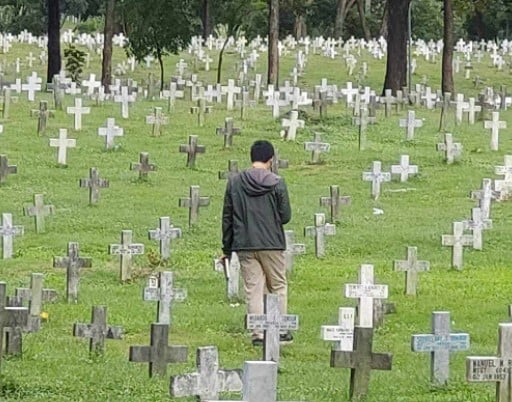The Libingan ng mga Bayani is a social space where epitaphs signal social relationships and realities
31 Jan 2024

In this paper, I looked at the epitaphs found on grave markers in Libingan ng mga Bayani. I investigated how the bereaved used specific linguistic practices such as word/lexical preferences, textual allusions (e.g., Bible verses, Catholic prayers, etc.), and affections (e.g., ‘daddy’, ‘dade’, ‘loving father’, etc.) and non-linguistic choices like images, seals, and symbols to ‘communicate’ their relationship with the deceased to possible observant readers. This is done by providing an initial function-based categorization of Libingan epitaphs, seven of which were identified: (1) affective, (2) associative, (3) celebrative, (4) memorative, (6) desiderative, and (7) summative. Finally, among other things, it also found that the epitaphs in the cemetery landscape of the Libingan index not only the deceased but also social relationships and realities, thereby suggesting that the Libingan is as much a social space as it is a material one.
Cemeteries are often associated with ghosts and the supernatural because of its natural connection with death, a rather grim topic most people are uncomfortable talking about. This paper, however, explores how the cemetery, specifically Libingan ng mga Bayani, can be a dynamic site of personalization, affection, and memorialization by looking at the epitaphs carved on grave markers through a (socio)linguistic lens. By doing so, it not only allows the reader to better understand how epitaphs figure in the cemetery landscape vis-à-vis the bereaved and the deceased, but it also encourages the more informed and academic readership to adopt cemetery studies as a point of departure for (socio)linguistic analysis.
Author: Nicko Enrique L. Manalastas (Department of English and Comparative Literature, College of Arts and Letters, University of the Philippines Diliman)
Read the full paper: https://doi.org/10.1080/13576275.2023.2268539
